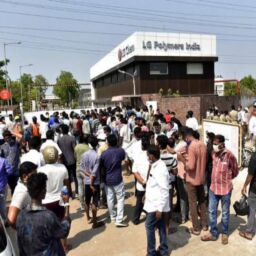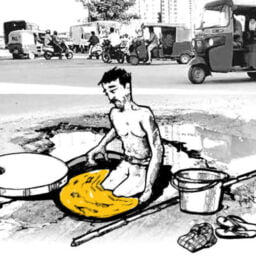Introduction
According to the data produced by the Small Arms Survey in its report on Civilian Firearms Holdings, 2017, the approximate number of firearms owned by Indian civilians is 7,11,01,000 and approximately every 5th Indian civilian out of 100 owns a firearm. Further, there existed 97,00,000 registered firearms in India in the year 2017, while the number of unregistered firearms was around a whopping 6,14,01,000 for the same year.
The Arms Act, 1959 is the primary legislation governing possession of firearms in India. In December 2019, The Arms (Amendment) Act, 2019 was enacted as a further amendment to The Arms Act, 1959. Through the means of this article, the author seeks to analyse the legislation in India concerning firearms.
The Arms Act: A Historical Overview
The first legislation related to the regulation of firearms came into force in the year 1878, during the British Rule, known as the Indian Arms Act, 1878. Before the First War of Independence in 1857, there were no statutes, regarding the regulations of firearms in India. After the First War of Independence, in the year 1858, Lord Lytton became the Viceroy of India and The Indian Arms Act, 1878 was therefore ratified in the course of his tenure as the Viceroy which regulated the manufacture, sale, possession and carrying of firearms.
Furthermore, through the means of this Act, it was made obligatory for Indian civilians to seek licence or permission to keep, sell or purchase arms. People who didn’t comply with the same could face both, the imposition of a fine in addition to a sentence for imprisonment for a maximum duration of 7 years. The aim of The Indian Arms Act, 1878 was to create a distinction between the Indians and Englishmen on the basis of race while restricting the access of firearms to Indians and suppressing any form of armed revolts or rebellions. However, an exception was provided in this Act that was some groups and persons such as all persons of Kodava race were allowed to keep arms without licences.
Current Indian Legislation Concerning Firearms
After India attained independence from the rule of the British, The Arms Act, 1959 replaced The Indian Arms Act, 1878. Through the means of this Act, the Government acknowledged and addressed the need for certain citizens to possess and employ firearms for purposes of sports, crop protection and self-defence. The Arms Act of 1959 was further reinforced by The Arms Rules, 1962 as both of these legislations put an emphasis on absolutely banning the un-licensed possession, sale, acquisition, manufacture, import, export and transfer of firearms.
The Arms Act, 1959 has categorized firearms into two distinct classes:
Bore can be defined as is the interior of the barrel of a gun or firearm. Calibre can be defined as the size of the bullet and it is determined by its width. For a person that understands the workings of a firearm, it can be said that the calibre of a bullet is slightly higher than the bore calibre. But for a normal person, you could use those interchangeably for simplicity.
Non-Prohibited Bore firearms comprise of firearms like handguns of calibre .35, .32, .22 and .380 while Prohibited Bore firearms consist of pistols (9 mm) and handguns of calibre .38, .455 and rifles of calibre .303 in addition to semi-automatic and fully automatic guns.
To acquire a license for possessing a Non-Prohibited Bore firearm, a person has to abide by the procedure that has been established under Chapter II and Chapter III of The Arms Act, 1959.
Before the occurrence of the Mumbai terrorist attacks of 2008, only members of the armed forces and heirlooms of families were furnished with a Prohibited Bore category of weapon. However, following the tragic events that unfolded during the Mumbai terrorist attacks of 2008, the Government of India modified the regulations concerning ownership of firearms. As a consequence of the same, civilians who face the apprehension of “serious and imminent threat” to their lives or those who reside in terrorist-prone areas, or even government officials employed under the Government who, by the virtue of their job have made themselves targets in front of terrorists, or MLAs or MPs, or citizens associated with anti-terrorist programmes, or their family members can apply for a license to possess a Prohibited Bore category weapon. Before the year 1987, a District Magistrate or a suitable authority of the State Government would issue licences concerning Prohibited Bore weapons. However, after 1987, this changed and ever since only the Central Government possessed the authority to issue licences with respect to Prohibited Bore category firearms.
Some of the harshest legislation with respect to firearms are currently in force in India. An ordinary Indian civilian cannot acquire a firearm without possessing a valid license granted by the competent licensing authority. Furthermore, The Arms Rules, 2016 makes it compulsory to get a licence for airguns too. In December 2019, The Arms (Amendment) Bill, 2019 was passed in Parliament. The aim of this bill was to bring further amendments to The Arms Act, 1959. In consonance with the amendments made, the number of firearms for the carrying, acquisition or possession of which, a person can attain a license, has been reduced from three to one. Further, the time period of validity of a firearm has also been extended by the Bill, from three years to five years.
Without a license, the Act prohibits the manufacture, sale, use, transfer, conversion, testing, or proofing of firearms. Further, the unlicensed shortening of firearm barrels or the conversion of imitation firearms into firearms has also been prohibited according to the provision of the Bill. Furthermore, obtaining or procuring un-licensed firearms, and the conversion of one category of firearms to another without a license has also been prohibited in consonance with the provisions of the Bill. However, members of rifle clubs or associations have been permitted to make use of any firearm for target practice instead of only point 22 bore rifles or air rifles. With respect to penalizing also certain amendments are made to the Bill. Certain offences now have an increased punishment than before. The Bill has also added new offences in relation to firearms. Furthermore, the Bill goes on to spell out offences committed by organised crime syndicates and illicit trafficking.
Conclusion
As mentioned above, Indian legislations governing the various activities concerning firearms are already among the strictest in the world. This has led to the gun-violence rates in India being just about 10 in 100 homicides using guns. However, more than 90% of deaths that are caused due to firearms are attributed to the utilization of an illegal firearm. Therefore, it becomes very important to control the un-licensed and illegal manufacturing, possession, acquisition and trade of firearms. This is an area that has a lot of scope for improvement, and a significant step in this direction could lead to a further decrease in the gun violence rates of India.
Author(s) Name: Rohitkumar Rout (Chanakya National Law University, Patna)















